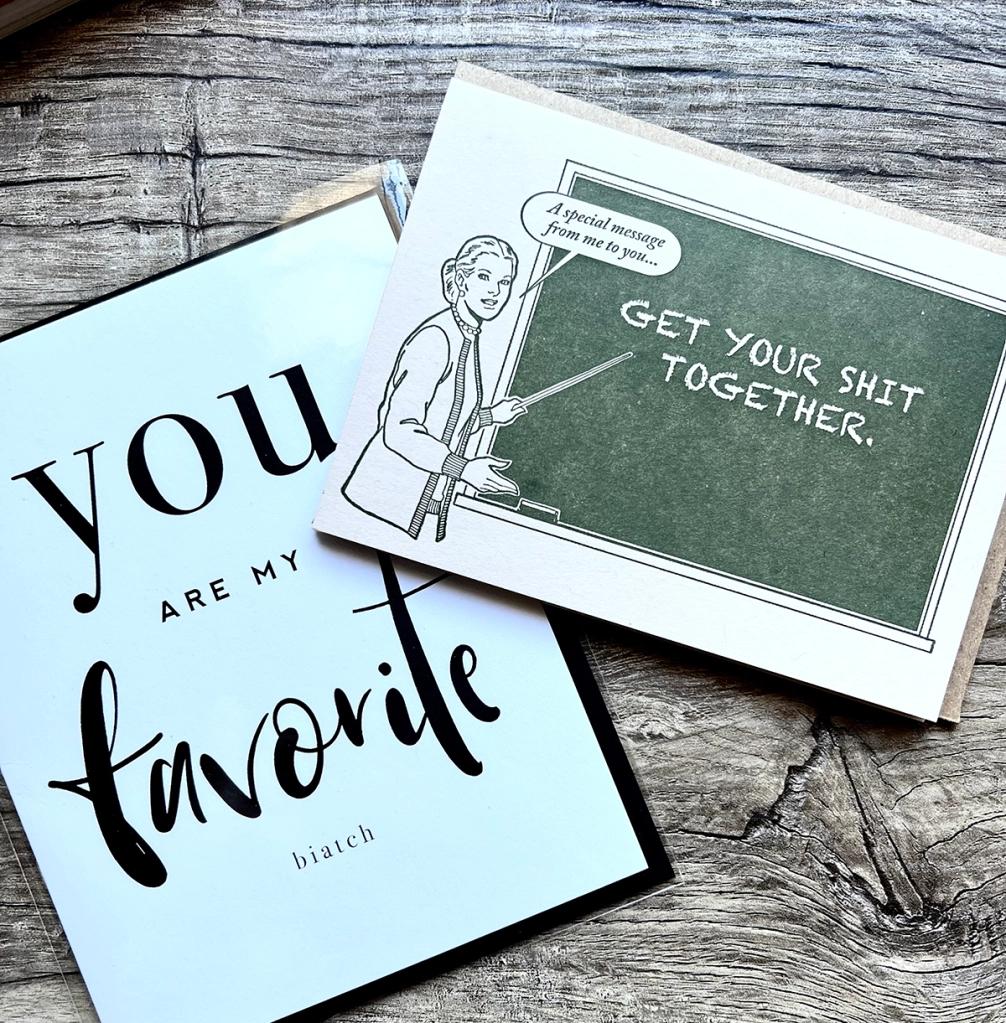
On a recent panel discussion for GCA (if you're not a member, check it out - this org does a TON for the stationery world) about processes and products in our industry, we touched on the topic of using cello sleeves with greeting cards that are sold in brick and mortar stores. Like, real stationery shops. Which I love. So so much. They have beautiful cards... and notebooks.... and Blackwing Pencils.... But I digress.
About half of the attendees said that their customers at the retail shops require a cello sleeve because it elevates the perceived value of the card, prevents finger prints from card lovers, and keeps the envelope with the correct card. It also creates continuity in their displays. All legitimate reasons.
But you all know about the extra cost, labor and material waste that cello bags add to your product. I personally have had the pleasure of stuffing thousands of freaking (beautiful) cards with envelopes into a sleeve and it gave me mad road rage. Even in a groove, it takes a lot of time. And you don't want to pre-sleeve too many cards at a time in case they don't sell and then you've wasted extra time and materials. The cello sleeve thing is a dilemma.
Here's the thing, I remember a time when cards did NOT come in cello bags. In fact, there are some brave designers at the forefront of the issue who are straight up refusing to do it, allowing customers to enjoy the feel of a heavy cotton paper or the depth of a beautiful letterpress design. And to see the inside of the card, which most of us card whoreders want to see.
So how do you make your retailers happy and keep your signature envelope with your gorgeous card?
Here are some suggestions that came up in our talk:
- Design the envelope to correspond with the card, include your brand on the flap - the big dogs in stationery do this why shouldn't you? Yes, it's extra design work. It's also brand building and if someone takes your envelope for another card, at least your logo is on it. You can print envelopes in small quantities and of course it's a bit more than a blank envelope but balances out the cost of the sleeve and the labor to sleeve your cards. This also helps alleviate the nightmare when your special envelope is not available, credit for this idea goes to Susan from Leader Paper and I LOVE IT.
- Removable wraparound labels are out there now, sometimes referred to as Card Clasps. They are cute little labels that can be printed with your logo and wrap around the open edge of the card and stick to the front and back. Some papers/inks can be damaged with these so you'll definitely want to test the options. We don't make these (yet) but we're looking into it.
- Charge Extra for cello bags and see if your retailers still need them. And if they do, just boxed them in the order and let the retailer sleeve the cards when they get put on the rack.
- Get Naked. Phil from JS McCarthy enlightened us that in Europe there is a movement to lose the cello sleeve and they're calling the movement 'Naked Cards' because it's accurate and they're hilarious. This is where the revolution comes in – if y'all decided to just quit providing them you could undo the current standard. It might be bumpy for a minute but that's always true when you're doing something bold.
Please let us know if you have suggestions or materials that are working for you, we're always looking for ways to improve our products and services. And if someon